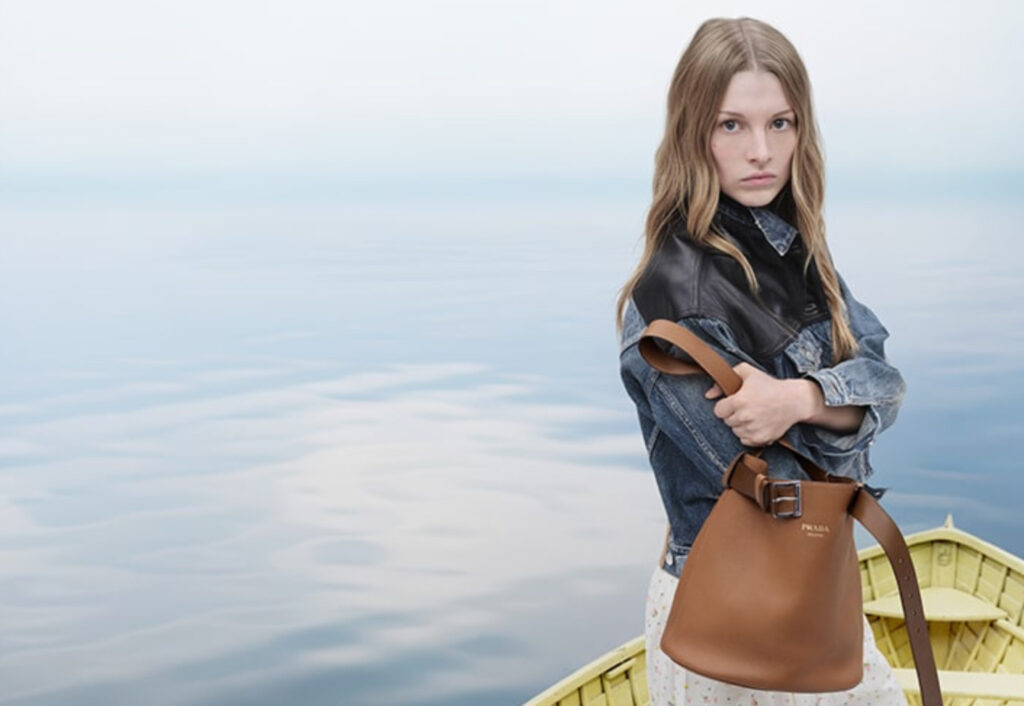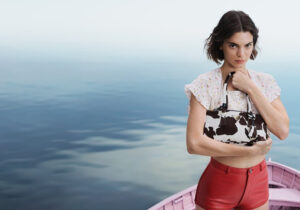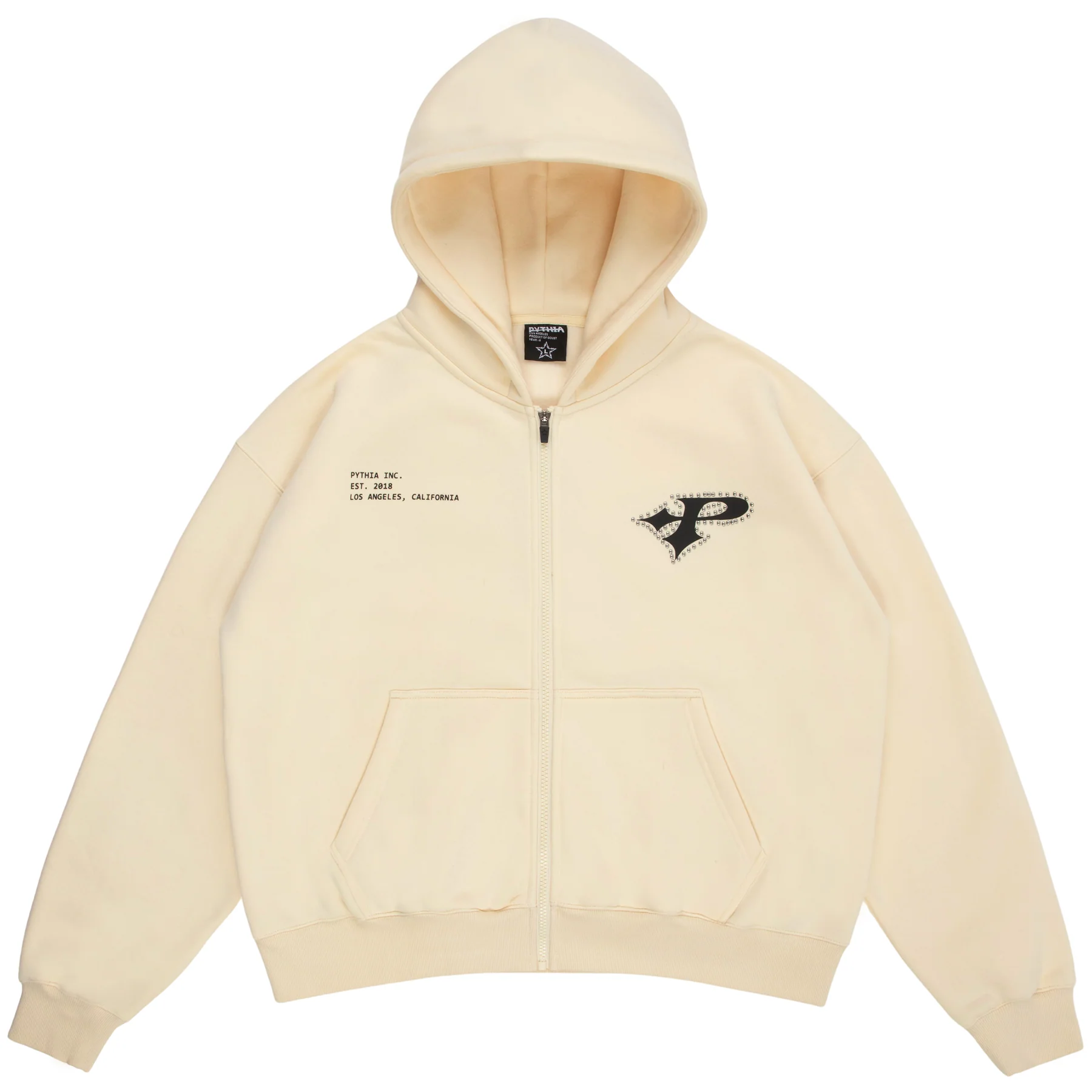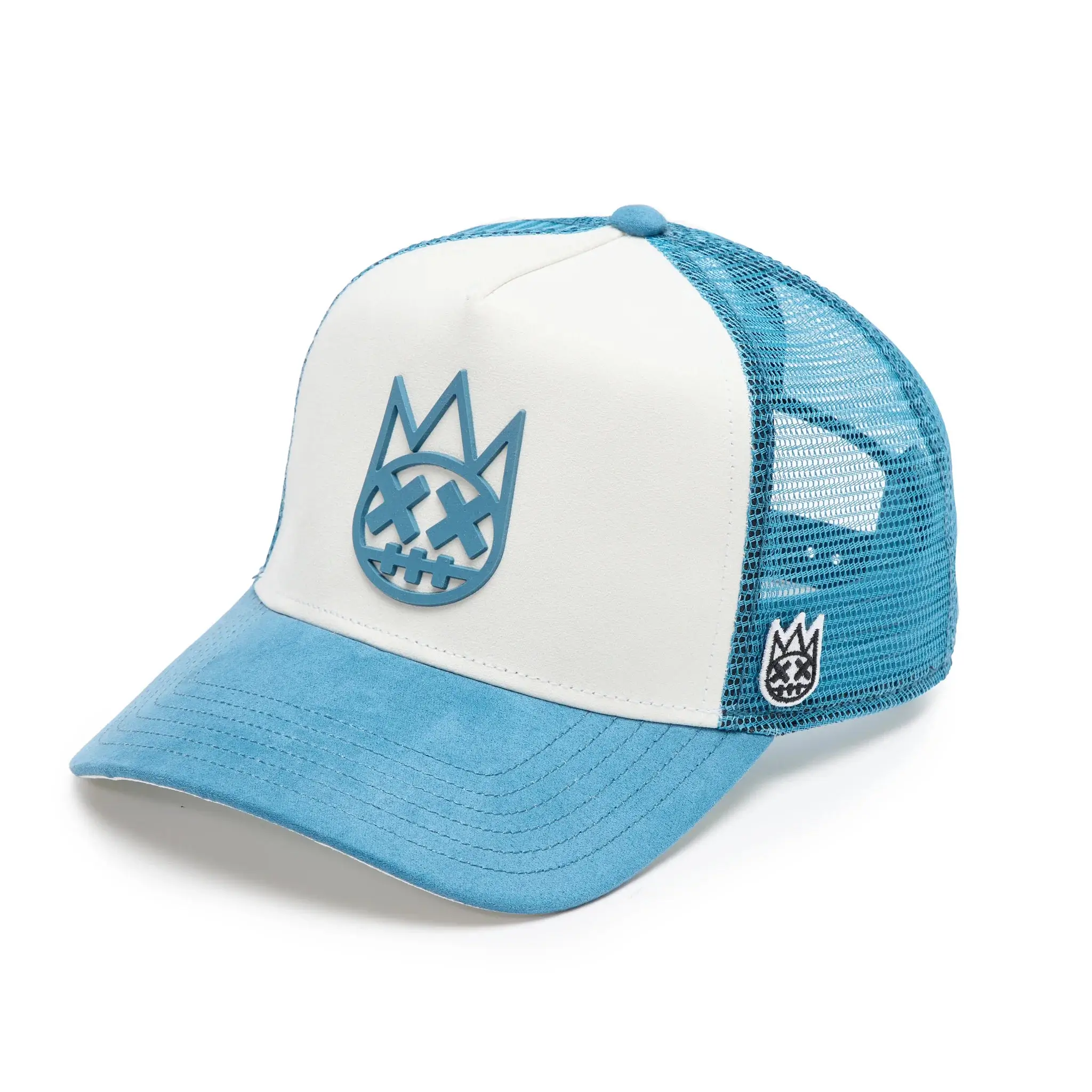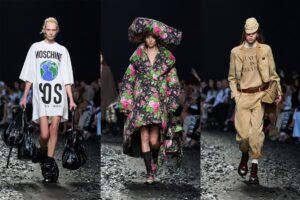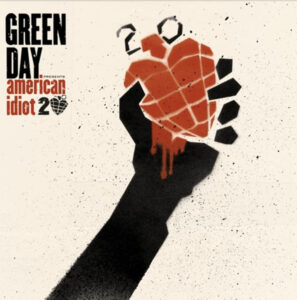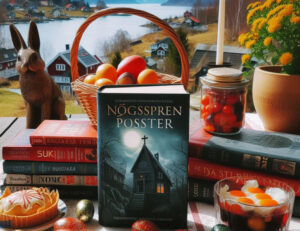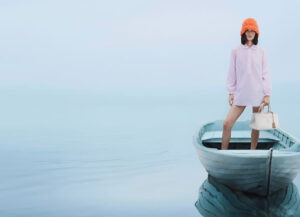
There are campaigns that sell clothes, and there are campaigns that sell a feeling. Prada’s Days of Summer does the latter. Shot by Oliver Hadlee Pearch and featuring Kendall Jenner, Hunter Schafer, and Troye Sivan, the campaign doesn’t just mark a season—it creates a mood. And not the kind of hyper-stylized, maximalist energy we’ve come to expect from summer drops. This is restraint. This is clarity. This is summer on silent.
Pearch captures his cast adrift, both literally and metaphorically, on brightly painted gozzi—traditional Italian fishing boats—floating in the middle of calm, endless water. The compositions are minimal. Just sea, sky, and the figures at rest or mid-thought. The clothes? Stripped down, sun-drenched, timeless. Think light tailoring, washed cottons, soft leathers, shades that feel pulled from a Mediterranean postcard.
There’s no branding overload, no visual noise. Prada lets the stillness speak. And in doing so, it speaks louder than most.
A Study in Restraint
The fashion industry often equates summer with sensory overload—tropical prints, oversized logos, music blaring in campaign videos. Days of Summer takes the opposite approach. It whispers. There are no beaches packed with bodies, no DJs, no overstyled glamour. Just three icons of modern youth culture placed gently on the water, caught somewhere between departure and arrival.
Kendall Jenner, poised and precise, embodies the classic Prada woman: self-possessed, cool under pressure, aware of her surroundings without being absorbed by them. Her gaze isn’t confrontational; it’s observant, almost thoughtful. In one shot, she stands at the edge of a boat like she’s about to dive—into the sea, into a memory, into the next scene of a film that hasn’t started yet.
Hunter Schafer, meanwhile, brings a softness that contrasts with her usual high-concept editorial roles. There’s a sense of peace in her presence here. Her expressions aren’t performed; they’re lived. A breeze moves across her face and she lets it. There’s nothing to prove. Just presence.
And then there’s Troye Sivan, relaxed and contemplative, wearing Prada’s more fluid silhouettes with a quiet kind of grace. He’s not posing—he’s existing. His body language suggests the calm that comes not from arrival, but from release. A letting go. It’s beautiful.
The Boats: More Than a Backdrop
The use of gozzi—traditional fishing boats from the Ligurian and Neapolitan coasts—is not a random aesthetic choice. They anchor the shoot in history, craft, and place. In contrast to the sleek, futuristic visions often seen in luxury fashion, these boats carry the weight of heritage. Their bright paint is chipped in places, the wood slightly weathered. But they’re not romanticized. They simply are. Like the campaign’s stars, they exist in the in-between.
The boats become symbols: of travel, of floating states, of being unmoored. They speak to the essence of summer not as a time of performance, but as a season of subtle shifts—of rest, of pause, of asking “what’s next?” without demanding an answer.
In this setting, Prada’s garments do what few collections manage: they reflect the space they inhabit. Loose shirts mirror the movement of water. Trousers skim the ankle like a breeze. The color palette—cream, rust, pale blue—mirrors the faded tones of late afternoons and salt-kissed decks. There’s no attempt to dominate the setting. The clothes belong to it.
What Is Summer, Really?
In the hands of Pearch and Prada, summer isn’t just a vacation. It’s a season of emotional movement. Of processing. Of suspending ambition for stillness. This campaign feels deeply personal for that reason. It doesn’t tell a story—it invites the viewer to fill in the gaps. Where are they going? Where have they been? Are they alone, or waiting for someone to arrive?
There’s no urgency in the shots. No one is in a hurry. And in that, there’s an elegance we rarely see in fashion anymore. This isn’t nostalgia. It’s not irony. It’s not fantasy. It’s presence. And that, in the hyper-speed culture we live in, is radical.
Prada’s Consistency in Evolution
It’s not surprising that Prada has delivered something so quietly assertive. The brand has long mastered the art of paradox: minimal but intellectual, luxurious but raw, nostalgic but future-forward. In Days of Summer, that balance is struck again—this time through a campaign that feels more like a meditation than a marketing push.
The clothes themselves reflect this evolution. While the core Prada codes are intact—sleek tailoring, rich textures, deliberate details—they’re softened here. Everything breathes. Fabric floats. Structure melts. Even the leather accessories feel more like travel companions than status symbols.
In styling, the choices are deceptively simple. No excessive layering, no complicated accessories. The elegance lies in the edit. A tank top, a linen suit, a loose shirt unbuttoned just enough to let the sun in. It’s the kind of simplicity that’s harder to pull off than maximalism—and more rewarding when done right.
The Cast as Storytellers
What unites Jenner, Schafer, and Sivan is not just fame, but relevance. They’re not just celebrities—they’re cultural translators, each with their own visual language. Their inclusion feels intentional, not trendy.
Kendall brings with her a world of visibility, but she plays against it here. Instead of serving high-gloss glamour, she gives something more grounded. Her performance feels like a pivot inward.
Hunter Schafer continues to defy conventional beauty standards and expectations in fashion. In Days of Summer, her presence feels like an invitation to let the guard down. The message isn’t “look at me,” but “feel this with me.”
Troye Sivan, always expressive and fashion-forward, fits seamlessly into Prada’s gender-fluid future. His posture, his styling, even the way he looks into the lens—all convey an ease that resonates. He’s not styled; he’s seen.
Together, they don’t represent a fantasy version of summer—they represent different ways of being present in it.
Oliver Hadlee Pearch’s Cinematic Calm
Photographer Oliver Hadlee Pearch is no stranger to editorial storytelling, but here he scales back. There’s a sense of cinematic restraint in the way each frame is composed. Long shots dominate. Negative space is used intentionally. The horizon line is often just above the eye. It creates a sense of openness—an invitation to breathe.
The lighting is natural. Soft shadows fall across shoulders. The sun never blares—it glows. Water reflects light back up onto faces without overexposing. Everything about the visual tone says: rest, reflect, exist.
This is not the hyper-saturation of fashion week runways or billboard campaigns. This is film stills. This is memory. This is how a summer moment feels just before it fades.
A Campaign for the Times
In a cultural moment saturated with urgency—news, content, reaction, repeat—Prada’s Days of Summer dares to be slow. It dares to give us quiet. It doesn’t demand attention; it earns it. And in doing so, it redefines what a seasonal campaign can be.
Fashion often chases the next. The next trend, the next face, the next moment. But Prada, in its most timeless form, reminds us that sometimes, the most powerful statement is to pause. To float. To look around and just… be.
Days of Summer doesn’t offer a product—it offers a feeling. That feeling is rare: peaceful, present, unforced. In that stillness lies the campaign’s strength. In the silence, Prada speaks clearly.
The images stay with you not because they scream, but because they hum. And in an industry that often rewards volume, that’s revolutionary.
No comments yet.

